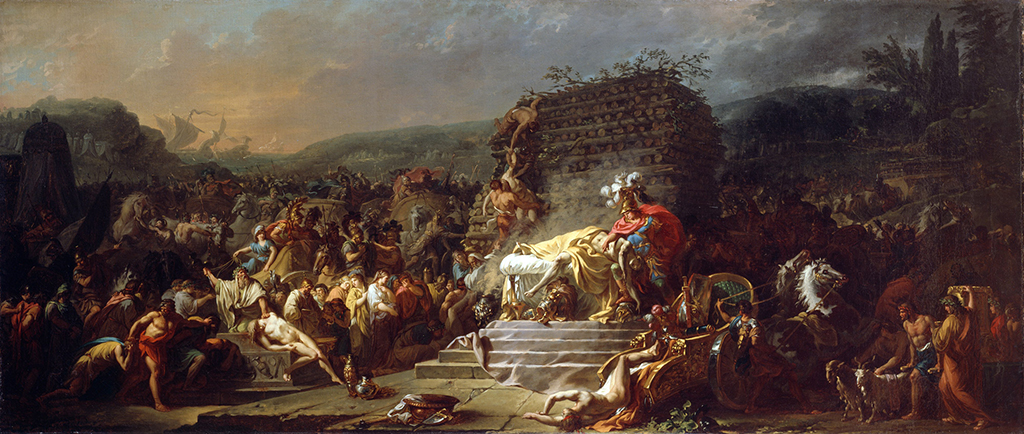This extraordinary painting is one of the most ambitious projects undertaken by artist Jacques Louis David and was finished in the autumn of 1778, after months of work.
The artist made use of a huge canvas, measuring over two metres across, in order to insert a great level of detail right across the scene. There are figures filling the entire bottom half of the work, with a huge crowd gathered for the Funeral Games of Patroclus. The Prix de Rome is a high profile award which a number of famous artists have won including David and Bouguereau. The former, himself, was able to study in Italy as part of the reward for several years and during so he completed this painting. At that time there was a strong relationship between France and the city of Rome via art, and a number of the best paintings produced within the city's academy were then transported back to France. This was one of those, having originally been put on display in Rome, in 1778. In order to achieve such an elaborate artwork, the painter would have to plan everything in great detail prior to commencing the oil painting itself. Many study drawings from the process still remain, including some now stored in the collection of the Louvre.
The composition itself features a landscape scene across the background, with rolling hills and a bright sky. In the foreground, however, appears a lively scene of almost chaos, with large numbers of figures sprawling about in all manner of different activities and behaviours. The inspiration for this was the final book of Homer's Iliad, with David having used literature as the basis to most of his best work. Again, it is Greek culture that leads this piece. Essentially, Hector, a prince, has slain Patroclus, who lies lifeless under a yellow cloth. His friend, Achilles, sits by his side in devastation. Hector himself is also now gone, and his body is found to the right hand side. Other prisoners taken in revenge for the death of his friend are also pictured here. We can consider this painting to be highly significant within the artist's career because it demonstrates his desire to re-imagine Greek culture within his work and also helps us to learn more about how he developed during his time studying in Rome.
The painting is now a part of the collection of the National Gallery of Ireland, having been purchased in 1972. Oddly, it had actually been lost for some years previous to that. There is a good selection of art to be found here, as one might expect for an institution such as this, and some of the highlights include work by Rembrandt van Rijn (Landscape with the Rest on the Flight into Egypt), Francisco José de Goya y Lucientes (Doña Antonia Zárate), Caravaggio (The Taking of Christ) and the famous female artist, Lavinia Fontana's, The Visit of the Queen of Sheba to King Solomon which has recently been restored.





